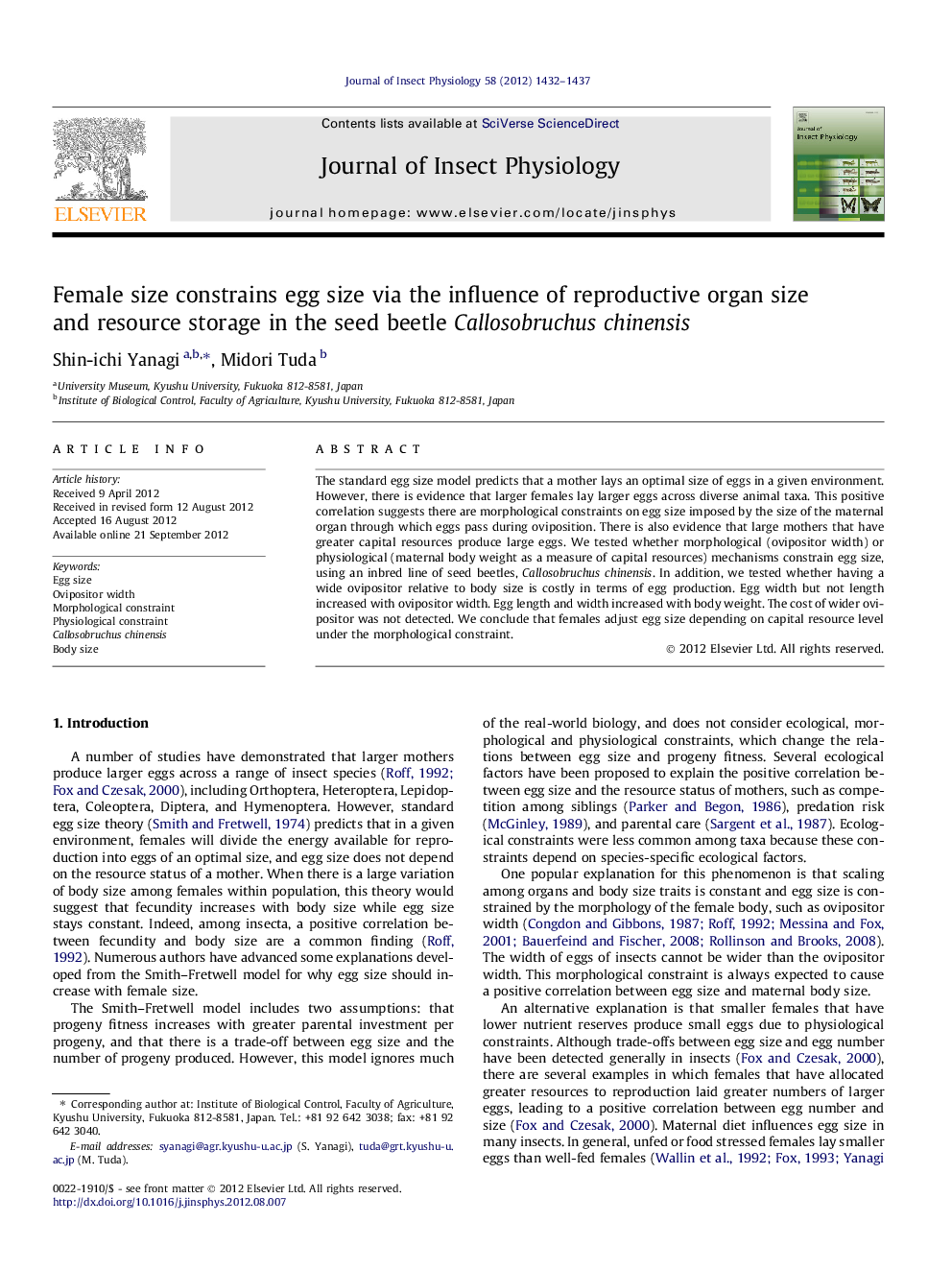| Article ID | Journal | Published Year | Pages | File Type |
|---|---|---|---|---|
| 2840510 | Journal of Insect Physiology | 2012 | 6 Pages |
The standard egg size model predicts that a mother lays an optimal size of eggs in a given environment. However, there is evidence that larger females lay larger eggs across diverse animal taxa. This positive correlation suggests there are morphological constraints on egg size imposed by the size of the maternal organ through which eggs pass during oviposition. There is also evidence that large mothers that have greater capital resources produce large eggs. We tested whether morphological (ovipositor width) or physiological (maternal body weight as a measure of capital resources) mechanisms constrain egg size, using an inbred line of seed beetles, Callosobruchus chinensis. In addition, we tested whether having a wide ovipositor relative to body size is costly in terms of egg production. Egg width but not length increased with ovipositor width. Egg length and width increased with body weight. The cost of wider ovipositor was not detected. We conclude that females adjust egg size depending on capital resource level under the morphological constraint.
Graphical abstractFigure optionsDownload full-size imageDownload as PowerPoint slideHighlights► Large female seed beetles laid larger eggs relative to smaller females. ► Egg width but not egg length was constrained morphologically by ovipositor width. ► Egg length and width were constrained physiologically by maternal body weight. ► These constraints resulted in a positive correlation between female size and egg size. ► Body weight as resource level constrains egg size under the morphological constraint.
